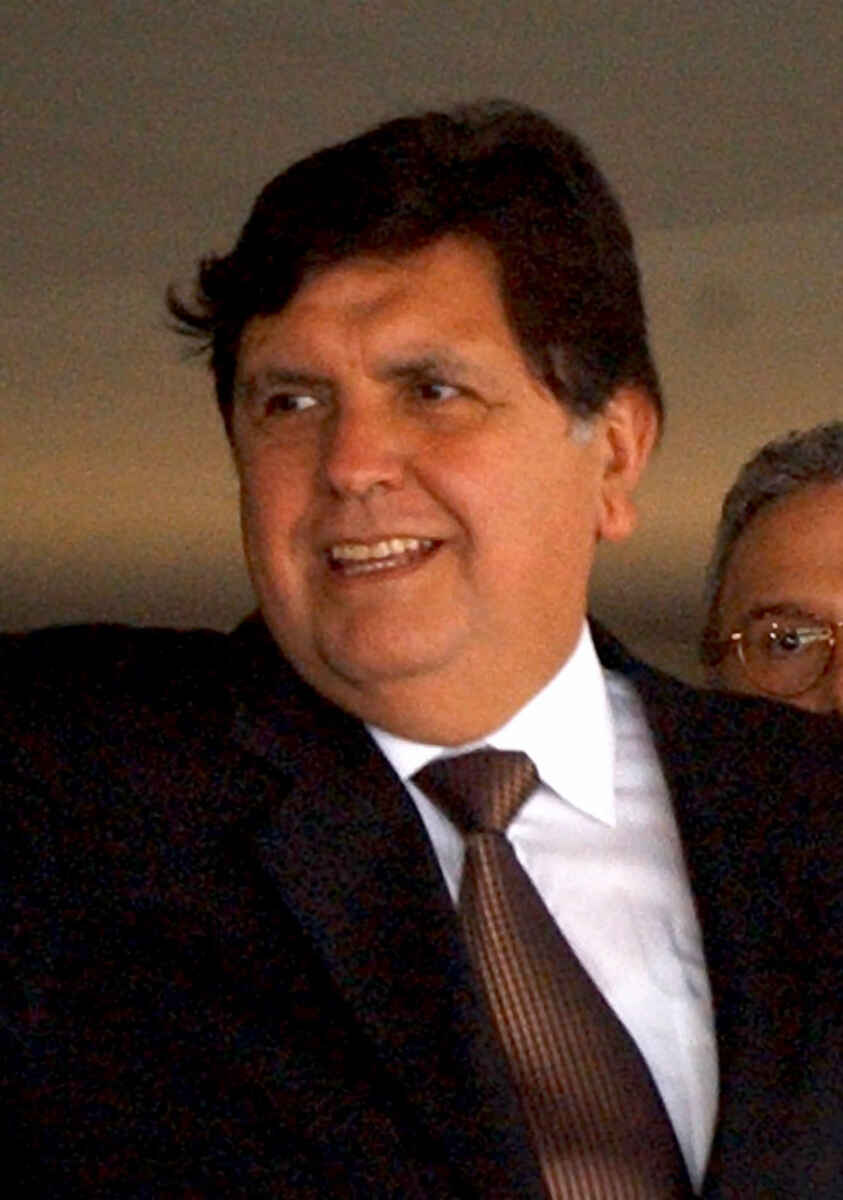
Article added on June 6, 2006: Sunday June 4, 2006 was a sad day for Peru. The Peruvian presidential election 2006 gave headaches to all reasonable people, who must form a clear minority in this Andes country because the Peruvian voters had decided in May to promote two populists to the decisive second round. Not a choice to be proud of.
The former officer Ollanta Humala (43) studied political science and law. Together with his brother Antauro, he led an unsuccessful insurgency in 2000 against President Fujimori, for which he ended up in jail before being pardoned by President Toledo. When Ollanta was forced into retirement in 2004, his brother led a bloody operation in opposition to this decision. As a result, four policemen and two followers of Antauro died. For this action, Antauro still serves a prison sentence.
Ollanta Humala presented an electoral program based on socialist and nationalist recipes inspired by the Venezuelan President Hugo Chavez and Bolivia’s Evo Morales. A nightmare for anybody who has studied or experienced the advantages of the market economy and free trade over socialism, state dirigisme and protectionism.
Humala was born into an upper middle-class family of intellectuals, his father being a lawyer. He appeals to the poor and uneducated. His father, Isaac Humala, created his own conception of the world: Ethnocacerism. It is a mixture of nationalism, racism – the Indians and Mestizos being the superior race, veneration of the Peruvian marshal and later President Avelino Caceres (who successfully fought against the powerful neighbor Chile) and communism. In his youth, Isaac was a member of the communist party.
The father largely influences his son’s political and economic vision, including the plan to limit Chile’s economic influence in present day Peru. Luckily, Hugo Chavez’ interference in the Peruvian electoral campaign in favor of Humala backfired. The voters decided with some 55% to 45% to elect Alan Garcia as their next president.
Unfortunately, the winner of the Peruvian presidential election 2006 is not better than the looser. The lawyer Alan Garcia (57) is by no means a more respectable man. As Peru’s President from 1985 to 1990, he managed to ruin the country, which he drove into a hyper-inflation of two million percent. Peru’s GDP fell by some 20%. The socialist managed to substantially increase the number of the penniless in an already poor nation from about 42% to some 55%. The Maoist movement of the Shining Path (Sendero Luminoso) took off under his presidency, which led to a civil war like situation. In addition, Alan García faced corruption charges. And you thought that Bill Clinton was the comeback kid?
In the Peruvian presidential election 2006, Alan Garcia, the leader of the left-wing Apra party, presented himself as reformed character – and as unbelievable as it may seem, he managed to convince too many voters. Most Peruvians who had supported the third-place finisher in the first round of the election, Lourdes Flores, voted for Garcia in the second, judging him the lesser evil.
In his electoral program, Garcia announced his willingness to keep the budgetary deficit below 1%. No redistribution of wealth and income this time although he is willing to protect Peruvian formers from negative effects of a free trade agreement with the United States. But he has no plan to limit the service of the foreign debt, which undermined the credit worthiness of Peru during his first presidency. Instead, he now favors trade and investment to create economic growth and increase welfare for all. In the presidential debate, Garcia pledged to create a “new social democracy”, without authoritarian abuses and with respect for the liberty of expression.
Peruvians can only hope, wait and see if Alan Garcia really turns out to be the lesser evil. Although the Presidents Fujimori and Toledo have reversed the economic downturn and pacified the country, still more than half the population is poor. It will be Alan Garcia’s delicate task to improve their situation without hurting the overall economy, growth and stability of Peru.
Added on August 7, 2006: On July 28, 2006, the Peruvian President Alan García presented his prime minister and his cabinet. Since his party, APRA, only controls 36 out of 120 seats in the Peruvian Congress, the country’s unicameral legislature, he had to reach out to the other parties as well as the part of the country which did not vote for him. As Prime Minister, García appointed Jorge del Castillo (APRA), his right hand man. However, many ministers are independent personalities, e.g. the new Minister of Economy and Finance is the “neoliberal” Luis Carranza, a former vice-minister of Finance in the cabinet of President Toledo and a former Chairman of Peru’s Central Bank. The new Minister of Foreign Affairs is José Antonio García Belaúnde. He is career diplomat, the nephew of the former President of Peru Fernando Belaúnde Terry (1912-2002) and the brother of the President of the party Acción Popular Víctor Andrés García Belaúnde (the party only won 1% of the votes in the 2006 general election). Furthermore, José Antonio García Belaúnde is a long time friend of Alan García since their student years spent in Lima. Allan Wagner, the Secretary General of the Andean Community, is the new Minister of Defense. The neurologist Pilar Mazetti is the new Minister of Health; she served as Minister of Interior in the cabinet Toledo.
Books about Peru from Amazon Deutschland and Amazon USA
Added to our newly designed pages on November 14, 2020 with a photo of President Alan Garcia. Photo copyright: O presidente do Peru Alan García em Brasília / El presidente de Perú Alan García en Brasília.
Date 9 November 2006. Source: Agência Brasil / José Cruz/ABr. Found via: https://commons.wikimedia.org/wiki/File:Garciaalan09112006.jpg